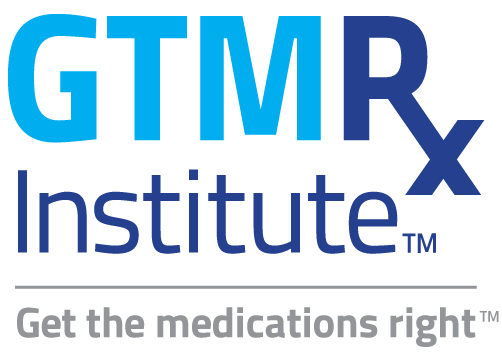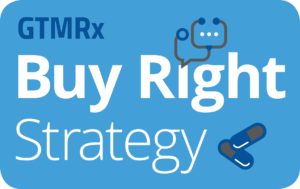Neil Goldfarb
President and CEO
Greater Philadelphia Business Coalition on Health
Measurement Matters: Thoughts about How Employers Can Assess the Value of their Innovative CMM Programs
June 7, 2021
How successful is your comprehensive medication management (CMM) program? Finding out is not merely a matter of measuring: You need to use the right metrics at the right time.
When employers assess the value of CMM programs, they must do so from the perspective of total-person health and total-person cost. In other words, we cannot look at pharmacy-related costs in isolation; those costs may very well rise (e.g. through increasing adherence), while medical utilization and costs are lowered (e.g. through improving clinical management and reducing adverse events associated with polypharmacy).
Among the questions to ask:
- Did we improve patient clinical outcomes such as diabetes control or blood pressure control?
- Did we improve humanistic outcomes such as pain, health-related quality-of-life, emotional status and satisfaction?
- On the economic outcomes side, did we lower total costs of care?
That’s the value proposition for CMM.
Give it time
Too often, payers and purchasers don’t let things play out long enough. We’ve seen this happen so many times before—disease management and wellness are just two examples. The story is always the same: After a year, the evaluations conclude the innovation didn’t work. But that’s simply not long enough for an accurate assessment. It probably took a year just to work out all the kinks in program implementation.
Innovation must be allowed to mature. Sustainable change doesn’t happen in a year. Now, I’m certainly not advocating support for programs that clearly don’t work. We want stringent evaluation. But appropriate evaluation happens only when an initiative is given the opportunity to succeed or fail.
I counsel my Coalition’s employer members—and employers in general—not to react too quickly. Don’t say, “I’m not getting results” and abandon the initiative. Recognize that even if you’re working with a vendor who has experience, it’s going to take some time to identify participants, to coordinate different services between your CMM vendor and your other vendors and generally get the program implemented.
Don’t sell yourself and your employees short by not allowing sufficient time for it all to play out. Key metrics can be tracked (e.g. quarterly), and program recruitment, engagement, and follow-up activities adjusted as needed.
You certainly can and should evaluate year one, but a reasonable time frame for assessing any new program is two to three years post initial rollout.
Start with process measures
Develop metrics of process for that first year. You can fine tune these with your vendor, but here are some basic examples:
- How many employees participated in the CMM program?
- Were those identified willing to participate? Were they satisfied?
- How many issues did the pharmacist identify?
- How many changes did the primary care physicians make based on the pharmacist’s recommendation? What changes were they?
You can assess all of this in the first year, then add cost and patient outcomes moving forward. And as an employer, you need to add one more important metric.
Measure productivity
Don’t overlook productivity as a measure of success in year two and beyond. Employers are the only stakeholders who care about the indirect costs of lost productivity. From an economic evaluation perspective, all employers say productivity is important, but most employers don’t actually measure it. Ask a vendor how they will measure it or measure it yourself.
Set yourself up for success
We know from many studies in many settings and populations that CMM can be highly effective, improving patient outcomes and reducing the total cost of care. But not all programs are the same, so let’s back up and ask another question: How can employers ensure optimal outcomes?
It begins with targeting the right employees. Select those who will most benefit. Begin by looking at claims data. For example, include those who are on several medications (polypharmacy) and/or have multiple comorbidities. Your vendor may help you with this process.
Perhaps even more important, you want people willing to engage in the program, to work with a pharmacist and to follow up with their primary care provider. Ensuring the employee is connected with primary care is going to help improve the likelihood of a good outcome. Look for those with a primary care provider or who are willing to get your help in identifying a PCP. If you have a worksite or near-site clinic, identify those willing to see a provider there.
Assessing the vendor
Identifying the right partner—the right vendor—is critical. How will they report back to you? How will they coordinate with your other vendors? To what extent are they willing to go at financial risk? I encourage my employers to look for vendors who are willing to take on full financial risk or at least share the risk.
Make sure the clinical pharmacists who were doing the comprehensive medication management are user-friendly and patient-centered. Yes, it’s important to be knowledgeable, but in this role of CMM, it’s critical to be able to communicate clearly to patients, to hold their hands, as necessary. Not everyone with clinical training has this gift. Ask basic questions about how they recruit and train, then ask to speak directly with some of their pharmacists.
And that brings us to another issue. Assuming the vendor works with multiple pharmacists, ask about their cultural, language and ethnic range. Ideally, you want the diversity of the pharmacists to reflect the diversity of your workforce. I’m not saying that only Black doctors can treat Black patients, for example. But the literature indicates that some people respond better to someone who they feel they can talk with openly.
A cost-effective investment
Finding the right vendor, doing your due diligence and evaluating success realistically will go a long way to realizing the potential of CMM for your workforce.
Employers are almost universally unhappy with the trajectory of pharmaceutical utilization and costs. They struggle from budgetary perspective and questioning whether it’s even sustainable.
CMM seems to me, one of the best and most cost-effective strategies that employers can deploy to address this and to help ensure that drugs are being used appropriately and that they are maximizing outcomes. My advice for employers comes down to the adage, “Don’t be penny wise and pound foolish.” Given how much you spend on pharmaceuticals and medical services, you have very little to lose by investing in a CMM pilot.
Neil Goldfarb is a member of the GTMRx Employer Toolkit Taskforce who has worked to develop an Employer Toolkit—guidance for employers as health plan sponsors to support CMM in practice. You can find it here.



